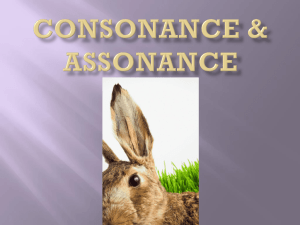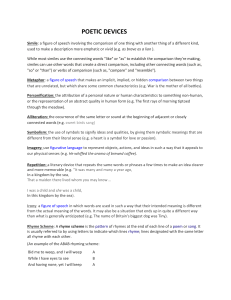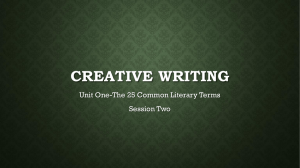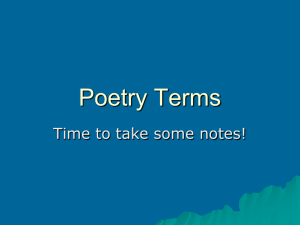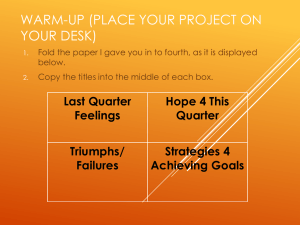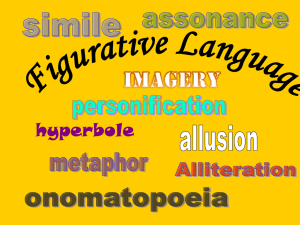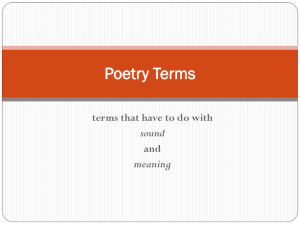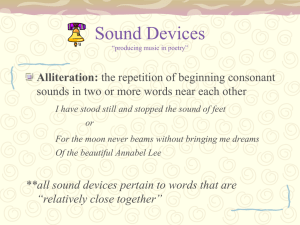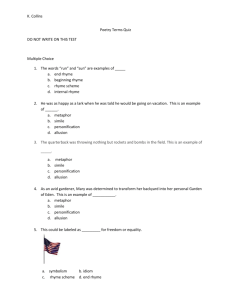Example
advertisement
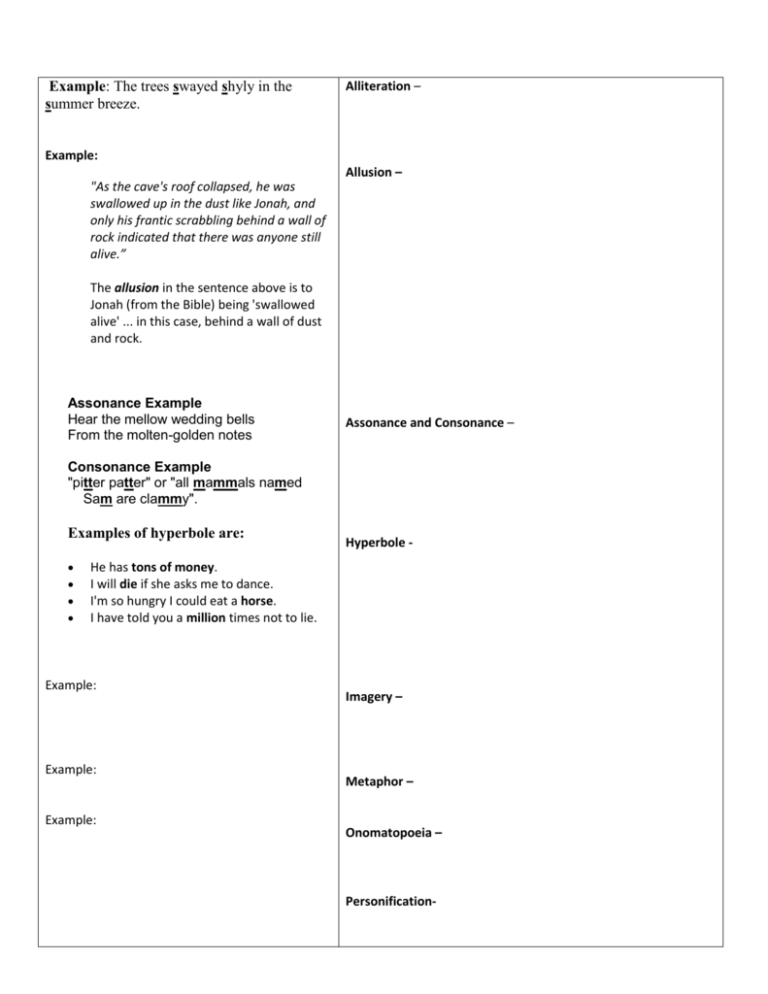
Example: The trees swayed shyly in the summer breeze. Alliteration – the repetition of consonants or sounds at the beginning of two or more words in a line of poetry Example: "As the cave's roof collapsed, he was swallowed up in the dust like Jonah, and only his frantic scrabbling behind a wall of rock indicated that there was anyone still alive.” Allusion – an indirect reference to another literary work or to a famous person, place, or event. It relies on the reader being able to understand the allusion and being familiar with all of the meaning hidden behind the words. The allusion in the sentence above is to Jonah (from the Bible) being 'swallowed alive' ... in this case, behind a wall of dust and rock. Assonance Example Hear the mellow wedding bells From the molten-golden notes Assonance and Consonance – repetition of vowel (assonance) or consonants (consonance) within non-rhyming words. Consonance Example "pitter patter" or "all mammals named Sam are clammy". Examples of hyperbole are: He has tons of money. I will die if she asks me to dance. I'm so hungry I could eat a horse. I have told you a million times not to lie. Example: Example: Example: Hyperbole - is a figure of speech that uses an exaggerated or extravagant statement to create a strong emotional response. As a figure of speech it is not intended to be taken literally. Hyperbole is frequently used for serious or for comic effect. Imagery – consists of descriptive words and phrases that re-crs for the reader. Imagery usually appeals to one or more of the five senses – sight, hearing, smell, taste, and touch – to help the reader imagine exactly what is being described. Metaphor – a comparison of two things WITHOUT using the wo” or “as” Onomatopoeia – Personification- – is giving human qualities to an object, animal, or idea. (ie. a smiling moon, a jovial sun) Examples: Rhyme – the occurrence of a similar or identical sound at the end of two or more words (suite, heat, complete) Rhyme Scheme – the pattern of end rhyme in a poem Rhythm – the beat created by the pattern of sound from stressed/unstressed syllables Simile – a comparison of two things using the words “like” or “as.” Speaker – Symbolism – Verse – the literary term for poetry Stanza – a group of lines that form a unit in a poem, roughly comparable to a paragraph in prose Couplet – Quatrain – Sonnet – Example: Denotation vs. Connotation For most people, the word mother calls up very strong positive feelings and associations loving, self-sacrificing, always there for you, understanding; the denotative meaning, on the other hand, is simply "a female animal that has borne one or more children.” Denotation - Connotation - or negative.

